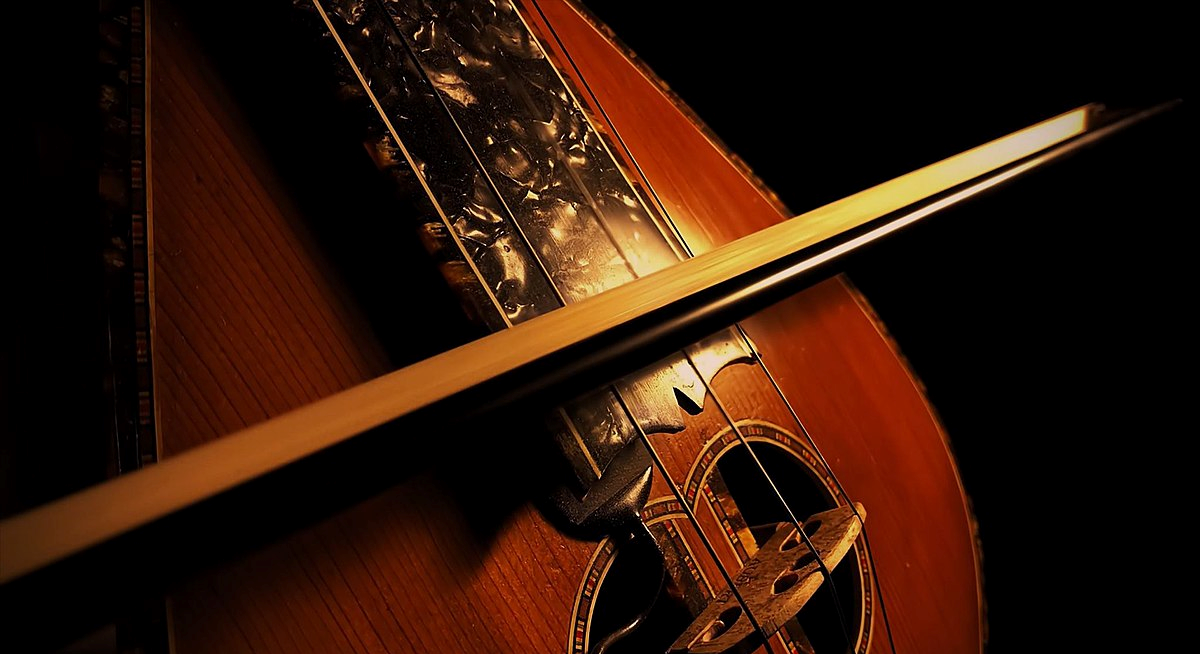Music and Dance
A Rich and Uninterrupted Tradition
Love Songs & Warriors Dances
Since antiquity the Cretans have been revered for their music and dance and Crete still has a rich and uninterrupted musical tradition. The folk music of Crete is atonal, (i.e. it lacks a key or tonal centre) with difficult rhythms and strange-sounding to a non-Cretan ear. It has a sound to it which one might call ancient Greek in style.
But in fact many sounds and traditions from North Africa, Greece and Asia Minor are fused together in the Cretan folk music of today. There are also influences of Byzantine music like where a continuous note or chord is sounded throughout the piece of music giving it a somewhat mysterious expression.
A pear-shaped fiddle with a vaulted back called a 'lýra' is the dominant folk instrument. It is often accompanied by the Cretian lute (laoúto), a long-neck fretted lute that is strummed like a guitar. Workshops manufacturing 'lyra's are mainly to be found in Rethymnon where you can go and see how the instruments are being made.
The Mantinada
Some say that the very soul of Cretan music is the 'Mantinada' - half-spoken, half-sung couplets of 15 syllables which are often improvised. The Mantinades form part of the 'poetic duels' at festive occasions when two or more people take turns in singing or reciting improvised poems with witty or cheeky remarks about their adversaries.
The most famous example of Greek renaissance literature, the Erotokritos (Ερωτόκριτος) is written in a Cretan language and rhyme, similar to the traditional mantinades. Its a story about true love, friendship, courage and patriotism written by Vitsentzos Kornaros (1553-1617) who was one of the most significant figures in Cretan and Greek poetry. Erotokritos still remains a popular classic work, and several Cretan musicians have put selected parts of it into music.
The Ritzika songs
Another category of songs are the 'Rizitika' songs. They are simple songs, often performed with the basic accompaniment of a single instrument. They are slow, soul-searching songs with themes of love, loss or liberation. Some of them probably date as far back as Byzantine times (approx. 1.000 AD) but others have been created as 'rebel songs' during the Turkish rule or the resistance against the German occupation during world war two.
The Horeftika songs
Finally, there are the 'Horeftika' or dance songs of which there are different subtypes each with its own timing and dance steps. Some of the types of Horeftika are 'Malavisiotiko' a very fast chain dance, 'Siganos' which is a wedding dance, 'Sousto' a dance for couples and 'Pentozalis'. The latter two are from the Rethymnon area.
'Pentozalis' is a spectacular favourite dance in Crete. Its name is derived from the words "Pente" (five) and "zale" (steps) because the dancers count five steps while dancing. It is a vigorous war dance, aggressive with high jumping movements. The Pentozalis some believe to be the descendant of an old Minoan dance. Some link it to the dance of the 'Kourites' (the warriors who protected Zeus as an infant). In the area of Psiloritis (where the Kourites lived according to the myth) an ancient Cretan dance called 'Empirrikios' is known which has steps similar to those of the 'Pentozalis'.
Places to go for traditional Cretan music
At 'Gounas Taverna' in Rethymnon you can experience Cretan music and dance. Another well known place is Kafe Kriti in Chania where locals and visitors alike come to share the musical tradition of Crete. At village festivities, whatever the occasion, Cretan music plays an important part and this is perhaps the best way to experience Cretan music and dance. Posters in tavernas and kafenions usually announce where and when the festivities take place.

